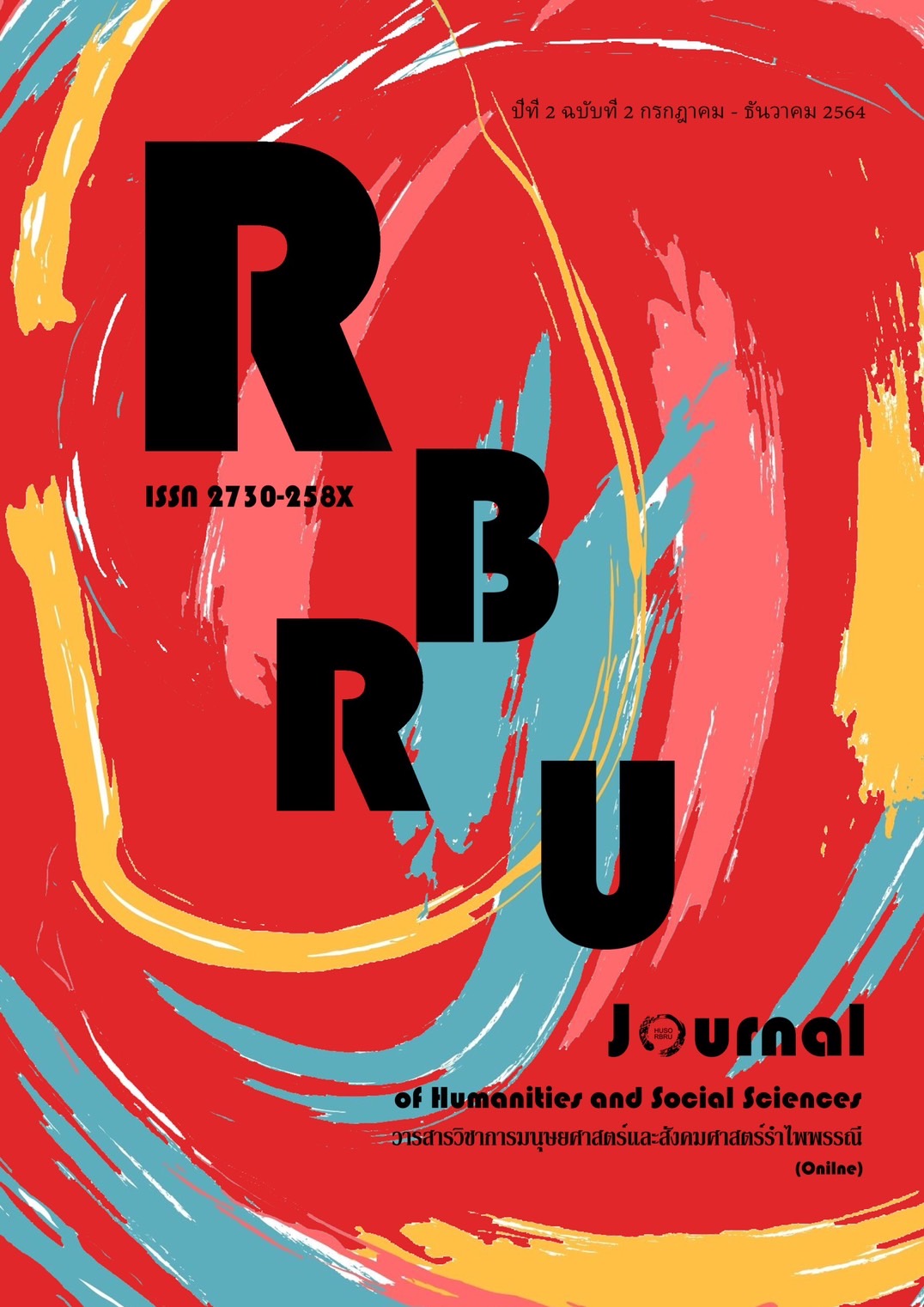Kanom Kuay Ling: Community Identity of Rare and Unknown Dessert Community in Nongbua Sub-district Mueang District Chanthaburi Province
Main Article Content
Abstract
This study aimed to 1) examine the historical background of the rare and unknow and local dessert community near Nongbua Canal in Nongbua Sub-district Mueang District Chanthaburi Province, 2) to find out about Kanom Kuay Ling recipes, and 3) investigate the popularity of Kanom Kuay Ling in this community located in Nongbua Sub-district Mueang District Chanthaburi Province. The purposive sampling method was used for the research area selection. The qualitative research approach was employed in this study. The results showed that this over 200-year-old community and the rare and unknown and local dessert community can be preserved as the magnificent community identity with the combination of simple lifestyle from past to present. The former occupations of villagers were gem cutters and artisanal fisheries. When gemstone resources was depleted, the villagers supplemented their income by forming a small group which was successfully settled there in 2016. 2) Kanom Kuay Ling ingredients are consisted of black glutinous rice flour, sugar, water, granulated salt, coconut, and sesame. The instructions of how to make the dessert are: 1) mix black glutinous rice flour with water and knead it until combined and make the flour as a roll, 2) boil the flour roll until cooked and floated, 3) grate coconut and mix it with a little salt then get it streamed, 4) let it drain, mix it with the grated coconut, and serve it with sugar and sesame 3) For the result of consumer dessert preferences, it showed that the dessert cost is not expensive, the taste is good, and the dessert name becomes the community identity attracting the tourists to taste this unusual dessert. As a result, the dessert should be preserved in order to maintain the cultural aspect of unknown and local dessert community.
Article Details

This work is licensed under a Creative Commons Attribution-NonCommercial-NoDerivatives 4.0 International License.
เนื้อหาและข้อมูลในบทความที่ลงตีพิมพ์ในวารสารถือเป็นข้อคิดเห็นและความรับผิดชอบของผู้เขียนบทความโดยตรงซึ่งกองบรรณาธิการวารสาร ไม่จำเป็นต้องเห็นด้วย หรือร่วมรับผิดชอบใดๆ
บทความ ข้อมูล เนื้อหา รูปภาพ ฯลฯ ที่ได้รับการตีพิมพ์ในวารสารวิชาการมนุษยศาสตร์และสังคมศาสตร์รำไพพรรณี ถือเป็นลิขสิทธิ์ของวารสาร หากบุคคลหรือหน่วยงานใดต้องการนำทั้งหมดหรือส่วนหนึ่งส่วนใดไปเผยแพร่ต่อหรือเพื่อกระทำการใดๆ จะต้องได้รับอนุญาตเป็นลายลักอักษรจากวารสารวิชาการมนุษยศาสตร์และสังคมศาสตร์รำไพพรรณีก่อนเท่านั้น
References
กรกนก มาหยา. (2560). ความนิยมในการบริโภคอาหารท้องถิ่นของประชาชนจังหวัดจันทบุรี. ภาคนิพนธ์ปริญญารัฐประศาสนศาสตรมหาบัณฑิต มหาวิทยาลัยราชภัฏรำไพพรรณี.
จันทร์เพ็ญ ถมประเสริฐ. (2562, 16 กันยายน). บุคคลในพื้นที่ชุมชนขนมแปลก. สัมภาษณ์.
ณัฐวดี สามัคคี. (2562, 6 มีนาคม ). นักท่องเที่ยวที่มาซื้อขนมขนมควยลิง. สัมภาษณ์.
ภาณิตา สรรพคุณ. (2561, 16 กันยายน).ประธานกลุ่มรัฐวิสาหกิจชุมชนขนมแปลก. สัมภาษณ์.
มะลิ เคลือบแก้ว. (2562, 16 กันยายน). ผู้ขายขนมควยลิง. สัมภาษณ์.
ระวีวรรณ เคลือบแก้ว. (16 กันยายน2561). ผู้ขายขนมควยลิง. สัมภาษณ์.
รุ่งนภา อาศัยราช. (2562, 6 มีนาคม). นักท่องเที่ยวที่มาซื้อขนมขนมควยลิง. สัมภาษณ์.
ศิริวรรณ โทนทอง. (2562, 16 กันยายน). นักท่องเที่ยวที่มาซื้อรับประทานขนมขนมควยลิง. สัมภาษณ์.
ศุภกร พืชพูล. (2562, 30 มีนาคม). ผู้บริโภคที่เคยรับประทานขนมควยลิง. สัมภาษณ์.
ศุภวิชญ์ นุชวงษ์. (2562, 30 มีนาคม). ผู้บริโภคที่เคยรับประทานขนมควยลิง. สัมภาษณ์.
สุกัญญา พืชพูล. (2562, 24 กุมภาพันธ์). ผู้บริโภคที่เคยรับประทานขนมควยลิง. สัมภาษณ์.
สุนีย์ ศักดาเดช. (2549). อาหารท้องถิ่นจันทบุรี. คณะวิทยาศาสตร์และเทคโนโลยี มหาวิทยาลัยราชภัฏรำไพพรรณี.
สุภางค์ จันทวานิช. (2540). วิธีการวิจัยเชิงคุณภาพ.(พิมพ์ครั้งที่ 7). กรุงเทพมหานคร : สำนักพิมพ์แห่งจุฬาลงกรณ์มหาวิทยาลัย.
สุวิมล .ถอยวิลัย. (2562, 16 กันยายน). บุคคลในพื้นที่ชุมชนขนมแปลก. สัมภาษณ์.


